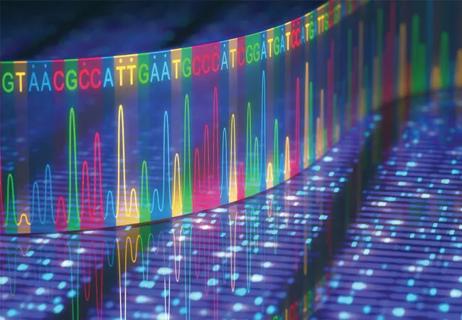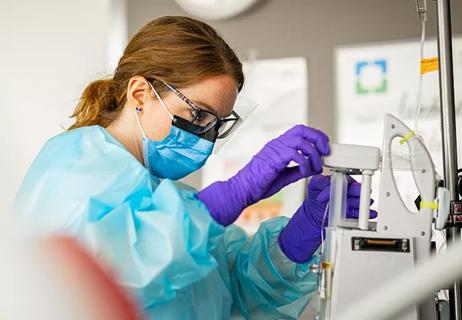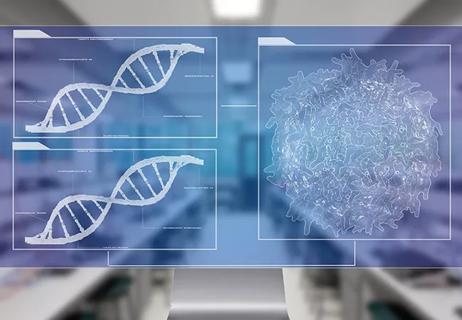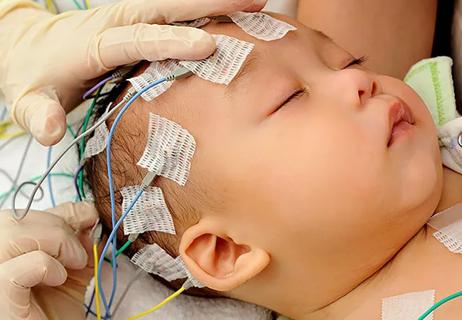Q&A with mitochondrial disease expert Sumit Parikh, MD

Cleveland Clinic has been named one of the inaugural members of the newly formed Mitochondrial Care Network. The first-of-its kind network is designed to formally align U.S. clinicians who care for individuals with mitochondrial disease in order to define and implement best practices in mitochondrial medicine and optimize patient care.
Cleveland Clinic is a non-profit academic medical center. Advertising on our site helps support our mission. We do not endorse non-Cleveland Clinic products or services. Policy
The network is a collaborative effort between the Mitochondrial Medicine Society and patient advocacy groups focused on mitochondrial disease. As one of 19 initial Mitochondrial Medicine Centers in the network, Cleveland Clinic will take part in the network’s pilot phase to better define its scope and priorities in advance of eventual network expansion. Designation as a Mitochondrial Medicine Center indicates that a program is capable of providing comprehensive, multidisciplinary care for patients with mitochondrial disease.
To learn more about the network and the latest in mitochondrial medicine, Consult QD sat down with pediatric neurologist Sumit Parikh, MD, Director of Cleveland Clinic’s Mitochondrial Medicine Center. Dr. Parikh is also a member of the new Mitochondrial Care Network’s governance board and one of its medical co-chairs.
Q: Tell us about the mission of the Mitochondrial Care Network.
A: It’s a national effort to organize individual mitochondrial medicine physicians and centers in partnership with national patient advocacy groups. The goal will be to define, design and implement best practices in mitochondrial medicine by building on available consensus guidelines, as well as to optimize management and improve patient outcomes.
Specifically, the network will organize and empower individual centers to (1) offer proper evaluation and diagnosis for primary mitochondrial disease, (2) provide comprehensive medical care to patients with primary mitochondrial disease, (3) foster patient education and (4) actively engage in clinical research and mitochondrial registries such as the North American Mitochondrial Disease Consortium (NAMDC) and the Mitochondrial Disease Community Registry (MDCR).
Q: Where does the evaluation and diagnosis of mitochondrial disease stand at this point?
A: Mitochondrial medicine has evolved significantly in the past decade. Advances in genetics have allowed for the identification of over 1,500 genes involved in mitochondrial function, with at least 290 linked to human disease.
Next-generation sequencing panels and whole-exome sequencing have allowed us to diagnose patients with noninvasive tests and have helped identify weaknesses in the sensitivity and specificity of our previously identified biomarkers and biochemical functional studies in muscle. As a result, many patients who were previously diagnosed as having “mitochondrial disease” have received a more accurate diagnosis, often due to mutations in genes affecting neurologic function but not primarily impacting the mitochondria. Many newer primary mitochondrial diseases have also been identified. Additionally, invasive functional studies in muscle are no longer the needed first-line tests for patients. These advances have led to the development of updated diagnostic criteria — an effort led by Cleveland Clinic.
Q: Underlying heritability of mitochondrial disorders can be hard to discern. What are the inheritance patterns, and how are family members who may be affected best identified?
A: Mitochondria are the only portions of our body to contain their own separate DNA (mtDNA). However, these maternally inherited mtDNA encode for only a small number of the proteins and regulatory machinery needed by the mitochondria. The rest are encoded for by the nuclear DNA. Thus, primary genetic mitochondrial disease can be due to maternal or autosomal inheritance. When not maternally inherited, most other monogenic mitochondrial disorders are in genes associated with autosomal recessive inheritance. A comprehensive family history is necessary in all patients but is not always positive because parents may only be carriers of pathogenic mutations.
Q: What about the management of identified mitochondrial disease? Where does that stand?
A: There have been challenges with variability in clinical care after a primary mitochondrial disease is diagnosed. Most patients with mitochondrial disorders have multisystem disease. Providers are not always aware of all potential manifestations and, at times, appropriate preventive care or critical care is not offered. A national attempt has been made to standardize care and ensure that proper clinical care is received by patients. These led to the development of standardized guidelines for the clinical care of patients with mitochondrial disease — another effort led by Cleveland Clinic.
Q: How do you see advancements in therapeutic approaches — such as genome editing, small-molecule drugs and stem cell therapy — impacting the management of mitochondrial disease?
A: Prior treatment approaches for these patients have relied on supplements with antioxidant capabilities. There have now been developments of several pharmaceutical agents that may improve or stabilize mitochondrial function. The field has just entered its first phase 3 study of a potential therapeutic agent that stabilizes unhealthy mitochondria. A phase 1 trial is launching to investigate the utility of mitochondrial transplant in affected individuals. UK researchers are investigating the possibility of mitochondrial donation prior to conception. We hope and expect the field of mitochondrial therapeutics to continue to grow.

The relationship between MTHFR variants and thrombosis risk is a complex issue, but current evidence points to no association between the most common variants and an elevated risk

One-time infusion of adenovirus-based therapy is designed to restore heart muscle function

Studying gender-specific health factors promises new insight into diagnosis, prognosis, treatment

Consortium is uncovering risk factors that spur disease development in an understudied group

Cleveland Clinic researchers receive $2 million grant from the National Institutes of Health

New Cleveland Clinic fellowship fosters expertise in the genetics of epilepsy

Renal genetic testing confirms diagnosis, guides management

Integrates genetic and clinical data to distinguish from GEFS+ and milder epilepsies